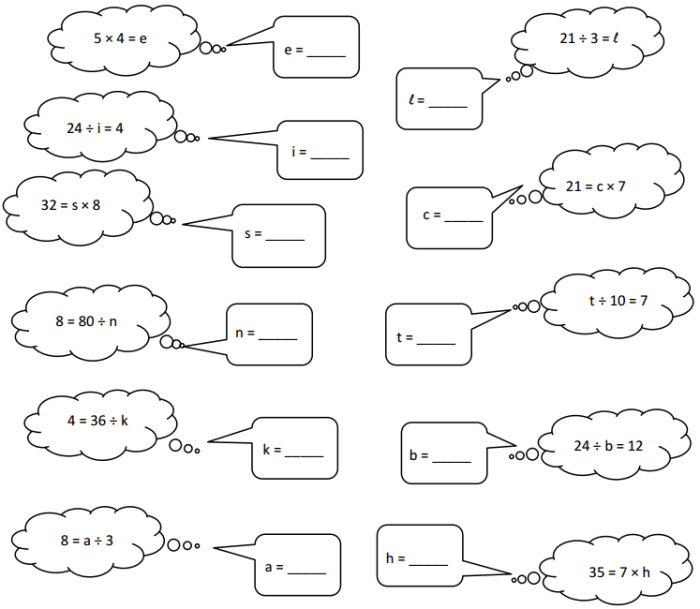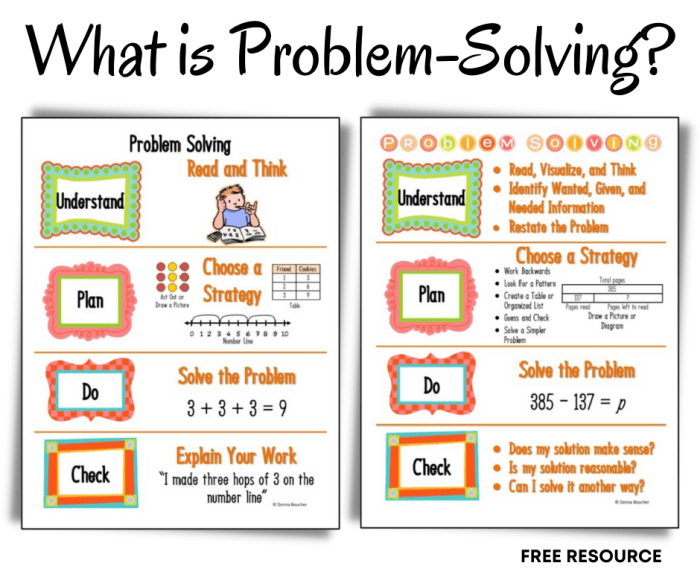Embark on an enlightening journey with the Problem Solving and Computing Lesson 3 Answer Key, your trusted guide to mastering essential problem-solving techniques and computational concepts. This comprehensive resource empowers you to tackle real-world challenges, unravel complex algorithms, and optimize your debugging and testing strategies, propelling you towards a deeper understanding of the intricate world of computing.
Delve into the intricacies of problem-solving methodologies, algorithms, and data structures, unlocking the secrets to efficient and effective solutions. Discover the art of debugging and testing, ensuring the integrity and reliability of your code. Explore a myriad of problem-solving tools, selecting the optimal instruments for each unique challenge.
Engage with real-world case studies, gleaning invaluable insights from the successes and pitfalls of others.
Problem Solving Techniques
Problem solving is a crucial aspect of computing, involving the application of various techniques to analyze, understand, and resolve computational challenges. These techniques provide a systematic approach to identifying and implementing solutions, enhancing the efficiency and accuracy of the problem-solving process.
Brainstorming
Brainstorming is a collaborative technique where individuals generate ideas and solutions freely without judgment. It fosters creativity and encourages diverse perspectives, leading to a wide range of potential solutions.
Divide and Conquer
Divide and conquer involves breaking down a complex problem into smaller, manageable subproblems. These subproblems are solved independently, and the solutions are combined to solve the original problem. This technique is particularly effective for large-scale or recursive problems.
Means-Ends Analysis
Means-ends analysis compares the current state of the problem to the desired goal. The difference between these states is then analyzed, and operators are identified to transform the current state towards the goal. This iterative process continues until the goal is achieved.
Algorithms and Data Structures: Problem Solving And Computing Lesson 3 Answer Key

Algorithms
Algorithms are step-by-step instructions that define the logic and operations required to solve a specific problem. They provide a structured approach to solving problems, ensuring consistency and efficiency. Algorithms are designed using various techniques, such as recursion, iteration, and divide and conquer.
Data Structures
Data structures are organized ways of storing and managing data. They determine how data is represented and accessed, influencing the performance and efficiency of algorithms. Common data structures include arrays, linked lists, stacks, and queues.
Debugging and Testing
Debugging is the process of identifying and fixing errors or bugs in code. It involves analyzing the code, identifying the source of errors, and implementing fixes to ensure the code functions correctly.
Testing
Testing involves executing the code under controlled conditions to verify its correctness and functionality. Different testing techniques, such as unit testing, integration testing, and system testing, are used to assess the code’s behavior and identify potential issues.
Problem Solving Tools

Integrated Development Environments (IDEs), Problem solving and computing lesson 3 answer key
IDEs provide a comprehensive suite of tools for coding, debugging, and testing. They offer features such as syntax highlighting, auto-completion, and built-in debuggers, enhancing productivity and simplifying the problem-solving process.
Version Control Systems (VCSs)
VCSs allow developers to track changes to code over time, collaborate effectively, and revert to previous versions if necessary. They facilitate code management, versioning, and collaboration, streamlining the problem-solving process.
Case Studies

Case Study 1: Optimizing a Database Query
A database query was taking excessive time to execute. Through analysis and optimization techniques, the query was restructured to improve its efficiency, significantly reducing the execution time and enhancing the overall performance of the system.
Case Study 2: Debugging a Complex Algorithm
A complex algorithm was malfunctioning, leading to incorrect results. Using debugging tools and techniques, the source of the error was identified as a logical flaw in the algorithm’s design. The flaw was corrected, and the algorithm was reimplemented, resulting in accurate and reliable results.
General Inquiries
What is the significance of problem-solving techniques in computing?
Problem-solving techniques provide a structured approach to analyzing and solving computational challenges, enabling programmers to develop efficient and effective solutions.
How do algorithms contribute to problem solving in computing?
Algorithms provide step-by-step instructions for solving specific problems, ensuring accuracy and efficiency in computation.
Why is debugging and testing crucial in problem solving and computing?
Debugging and testing identify and resolve errors in code, ensuring the reliability and correctness of computational solutions.